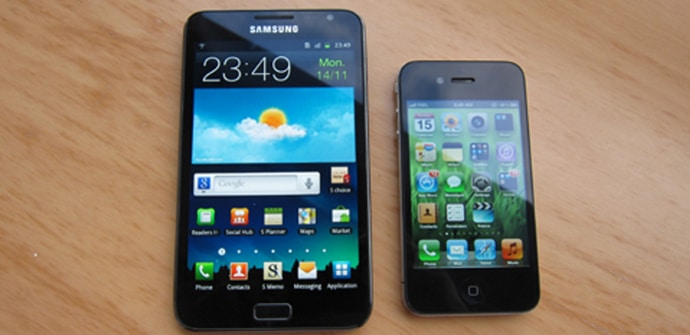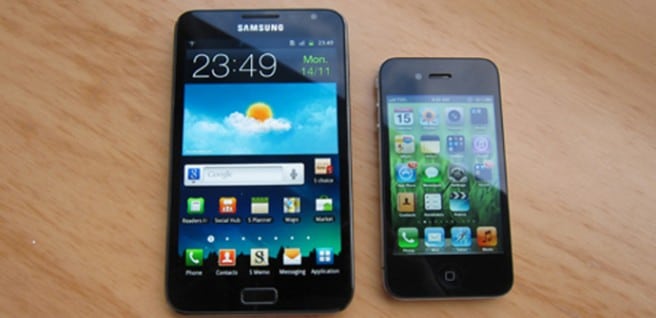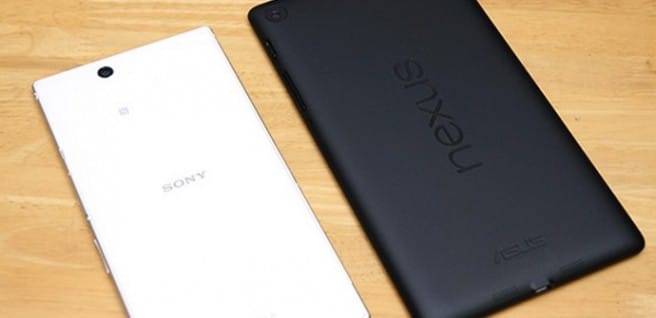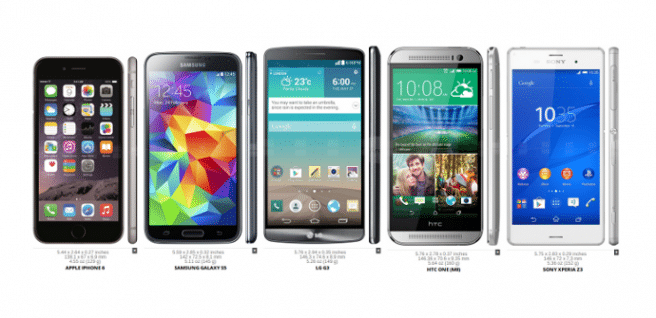
After having insisted over and over again that the iPhone with a 4.3-inch screen it was the perfect size, Apple Lossless Audio CODEC (ALAC), has been left with no alternative but to acknowledge that the market demanded telephones with larger screens, even launching the first iPhone that could be considered a phablet, and their iPhone 6 they are breaking sales records. It seems that this chapter could therefore end the debate with the conclusion “bigger is always better”. The controversy about 6 inches Nexus 6However, it points in a very different direction. Should smartphones stop growing?
Beyond 5 inches
Although the Galaxy Note It was not the first smartphone to reach or surpass the 5-inch barrier, it was undoubtedly the first to do so with some success, back in 2011, and the main responsible for the emergence of the concept of "phablet”. It is interesting to remember, incidentally, that a “phablet”Was initially any smartphone with a screen 5 inches or more, now that so many refuse to think of phones of that size as such and it seems that this term is only applicable to those who approach the 6 inches (something that, on the other hand, was unthinkable until the beginning of last year the Ascend Mate with 6.1 inches).

And it is that in just 3 years, we have gone from considering the 5.3 inches of the Galaxy Note original as almost an eccentricity, to see flagships like the LG G3 with screen 5.5 inches. Even if we agree to consider as phablets only smartphones with screen displays 5.5 inches or more, there is not one of the large manufacturers that does not have one, and this includes not only those who mainly work with Android and that they have had it easier in this sense, but also to Apple Lossless Audio CODEC (ALAC),, which, as we remembered, always denied the big smartphones, since Nokia, although for this Microsoft he had to specifically work on an optimization of his software to make it possible.
Backtrack?
Obviously, we couldn't expect that screens will continue to grow indefinitely, but where is the limit? Can the phablets de 6 inches or more consolidate, or are they just a fad? Can the "real" aspire phablets with screens 5.5 inches or more to conquer the smartphone market? For the first question it seems that we already have an answer, partial at least, and it is negative. All the manufacturers that have tried to go beyond 6 inches have ended up backing down. The loudest case was that of Xperia Z Ultra, that Sony ended up selling only with Wi-Fi connection, as if it were a mini-tablet, but even the pioneer Ascend Mate has dropped to 6 inches in its latest edition. It seems that as many other manufacturers are beginning to cut inches for their flagship phablets as well: Samsung keeps the Galaxy Note 4 at 5.7 inches y has brought the Galaxy Mega to just 6 inches and it is expected that the successor of the HTC One Max drops even down to 5.5 inches.

For the second question, it seems that the answer seems to be equally negative, even though phablet sales keep going up, since at the end of the day the starting point is quite low. And it's not just that iPhone 6 sales son far superior to the iPhone 6 Plus (something that could be explained perhaps simply by the smaller stock of this than it has Apple Lossless Audio CODEC (ALAC), and that, in any case, is in question), but we still find a better example even in the rejection generated in many smartphone users with a quality / price ratio that should turn them into a real boom. We already saw it, for example, with the reluctance of many regarding the 5.5-inch screen of the OnePlus One (which seem to have prompted the company to consider a smaller size for the OnePlus 2), and now we have an even better example in the Nexus 6.
The controversy of the Nexus 6 and the case of the LG G3
As you already know, there are not many doubts that the Nexus 6 is going to climb to almost 6 inches (5.92 to be exact) and, to put it mildly, the rejection you're running into is getting pretty big. Not even spectacular technical specifications that they are supposed to (Quad HD screen, Snapdragon 805, 13 MP camera), they are managing to avoid that all the attention is focused on the size of the device. In a recent online survey of the medium Phonearena, which obviously cannot be considered very scientific but is equally a good mood thermometer, the results were staggering, with 7 out of 10 respondents stating that the Nexus 6 it was too big for them.

It is curious, in any case, that the LG G3, with a screen of 5.5 inches, you will not come across a similar reaction at the time, but you cannot help but notice that LG is one of the manufacturers that best optimizes the dimensions of their devices: with 14,63x7,46 inch, is actually in the same range as the Galaxy S5 (14,2x7,25 inch), that he HTC One M8 (14,74x7,06 inch) or that the X (14,6x7,2 inch). The size difference with the iPhone 6 (13,81x6,7 inch) is, in fact, less than with the 6 iPhone Plus (15,81x7,78 inch), despite having the same screen size as the latter.
Should we conclude that this is the maximum range in which a smartphone that aspires to become a mass device can move? What is the ideal size of a smartphone for you?